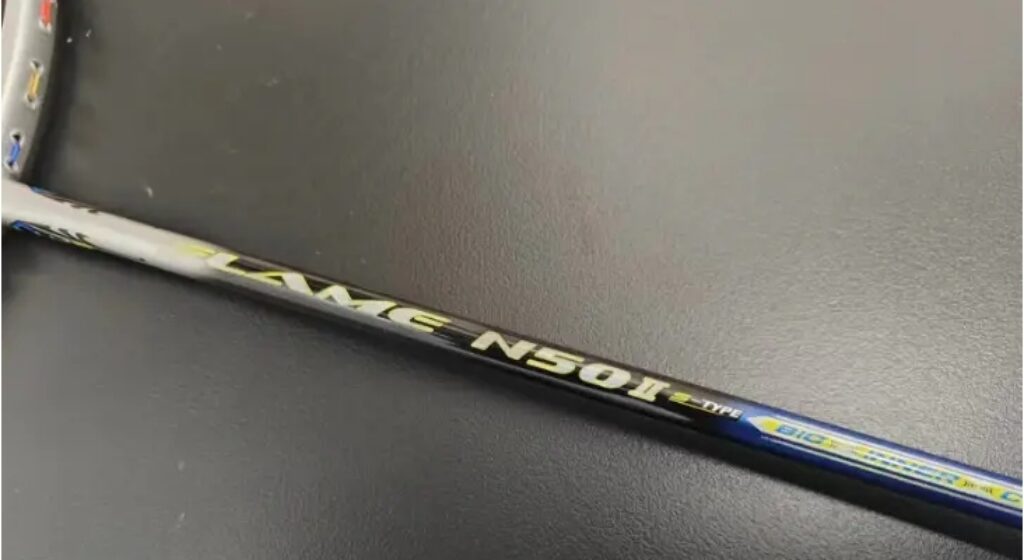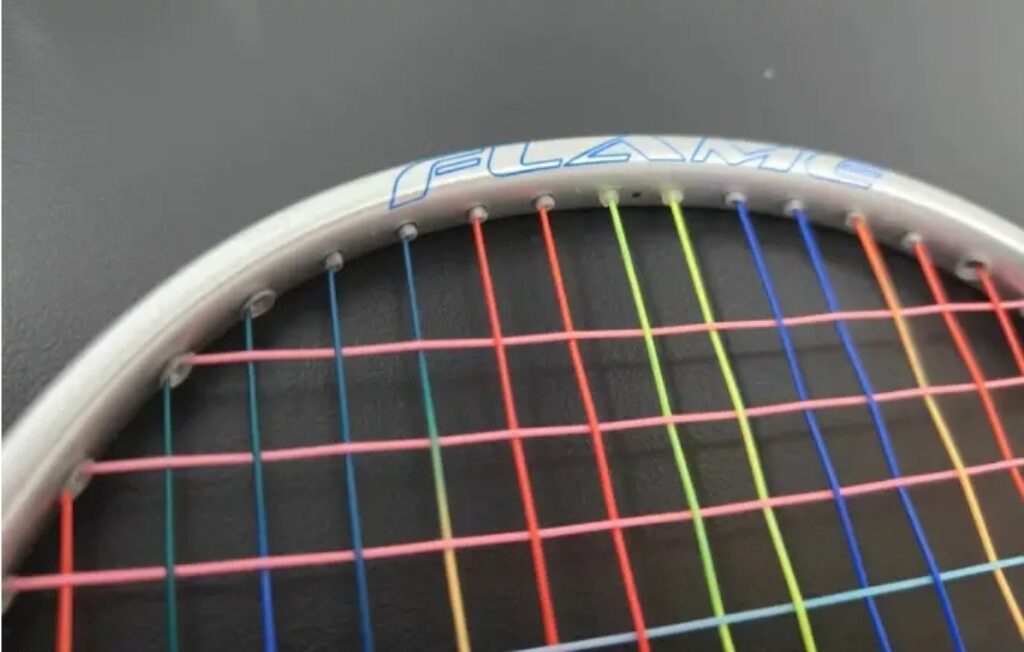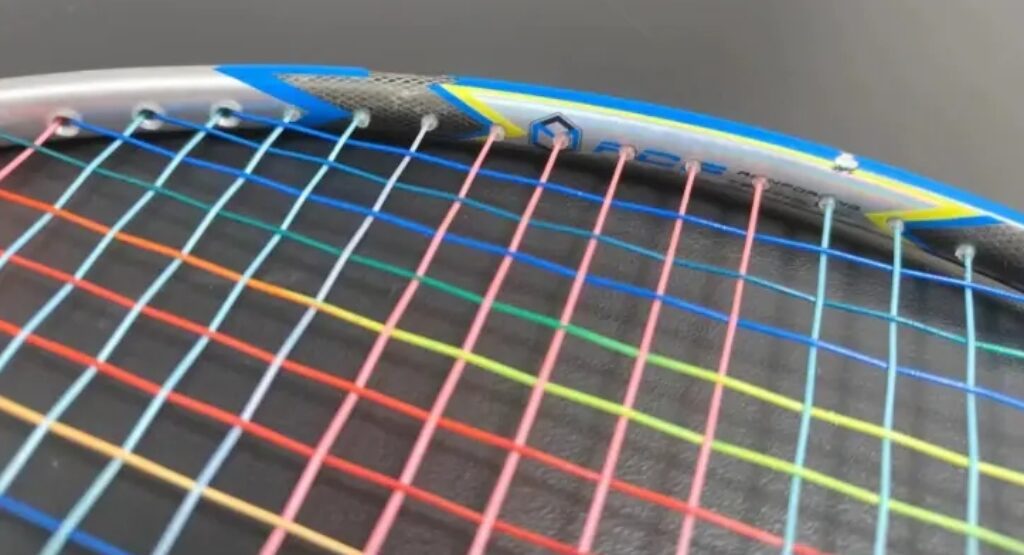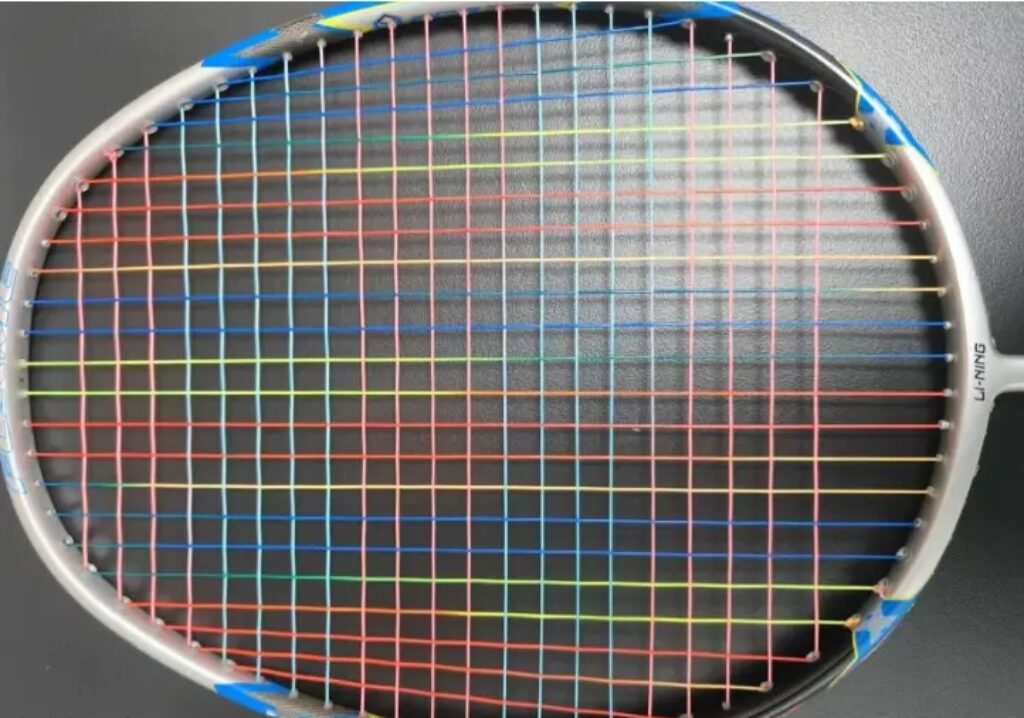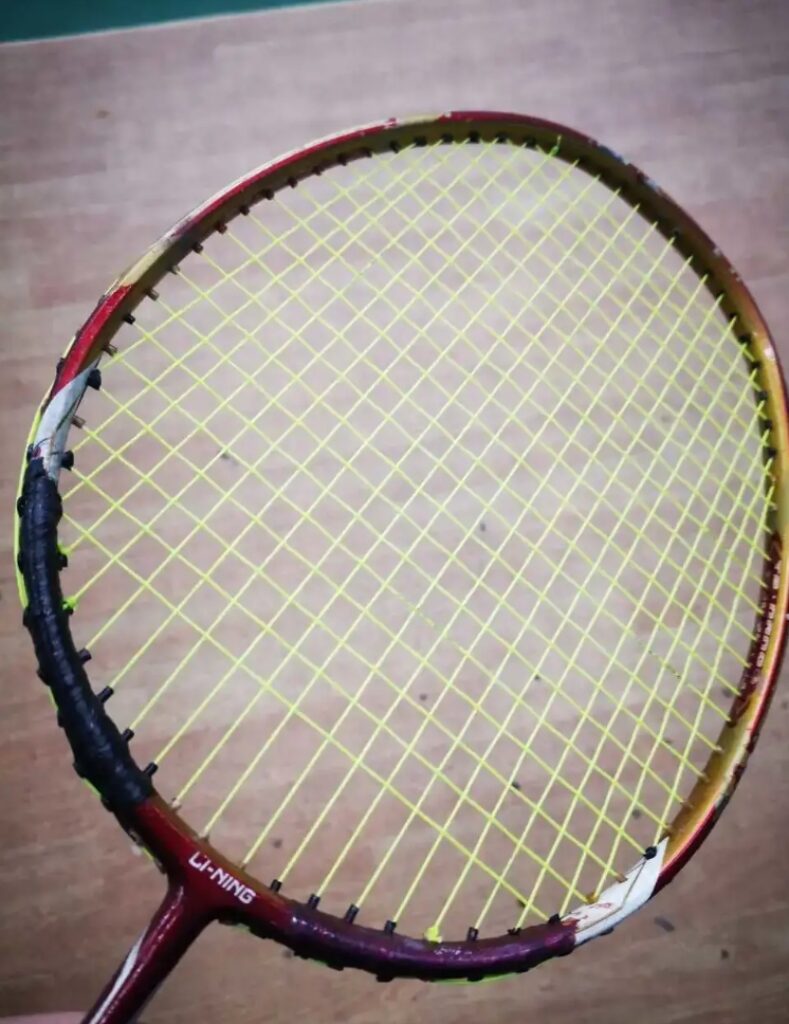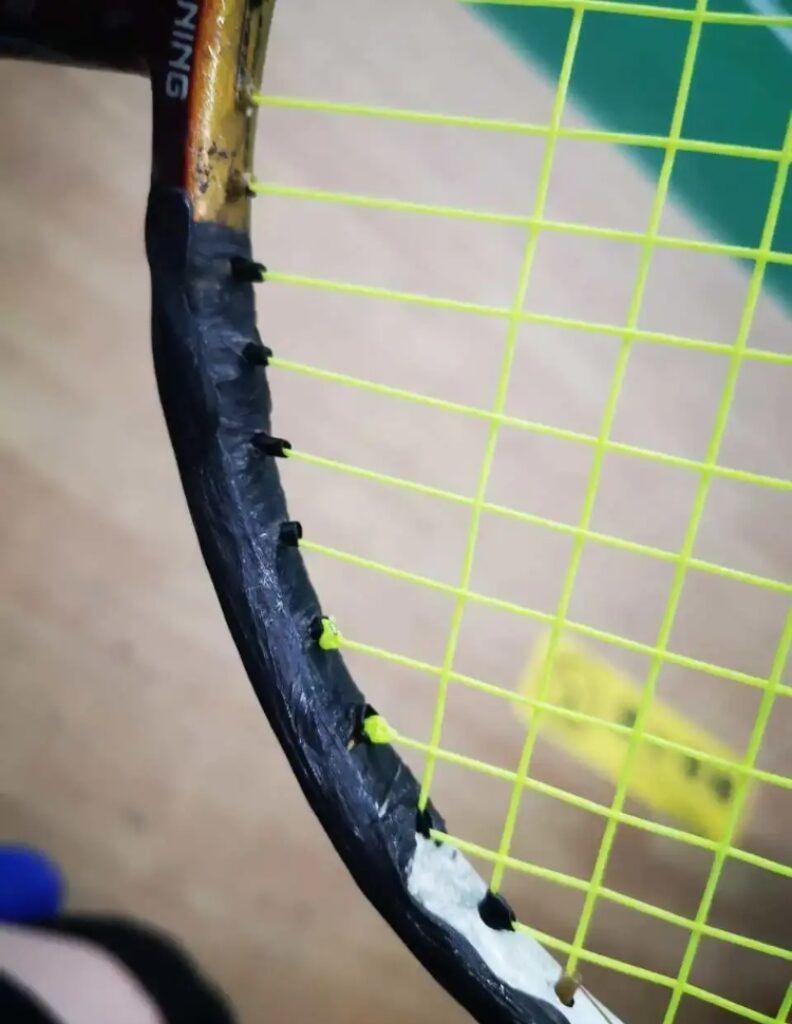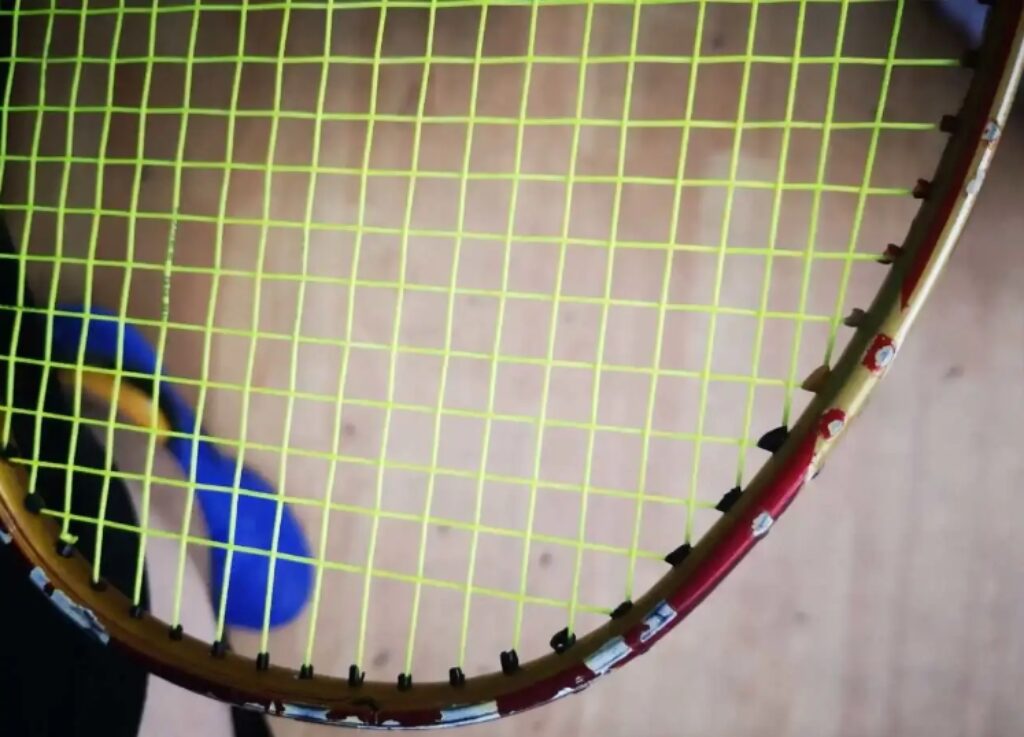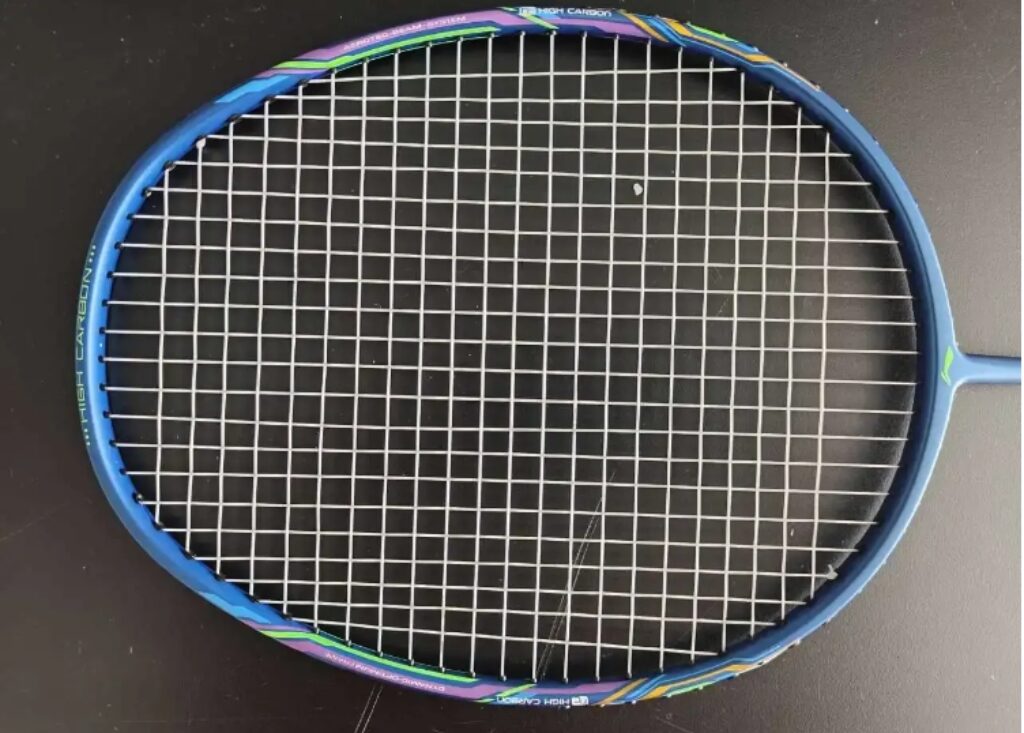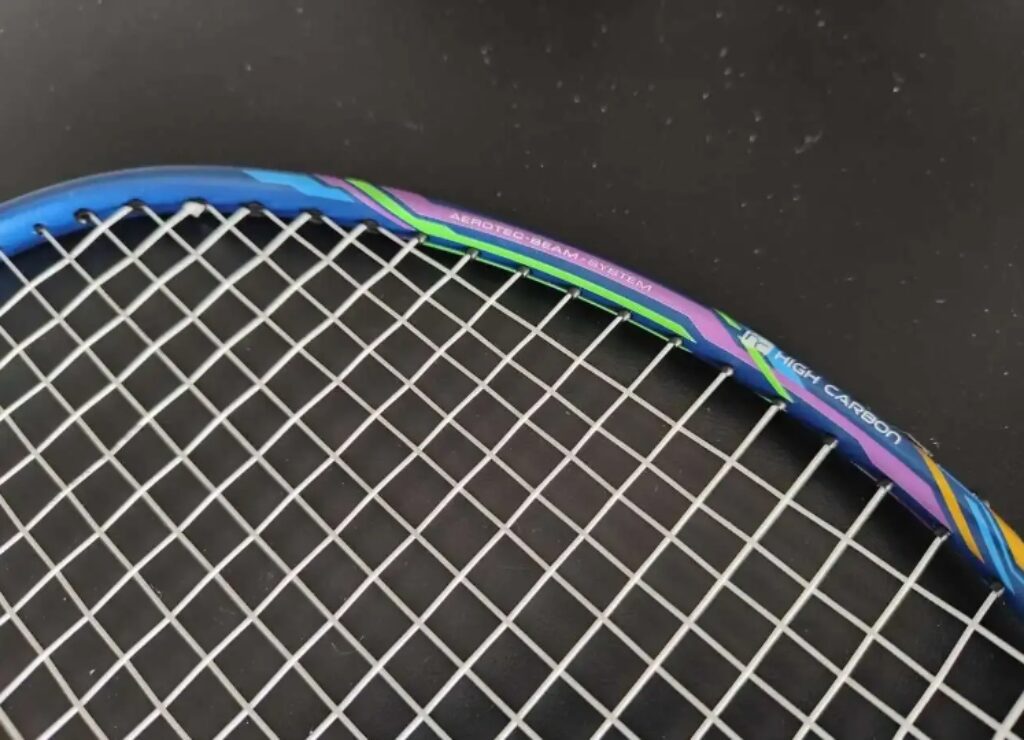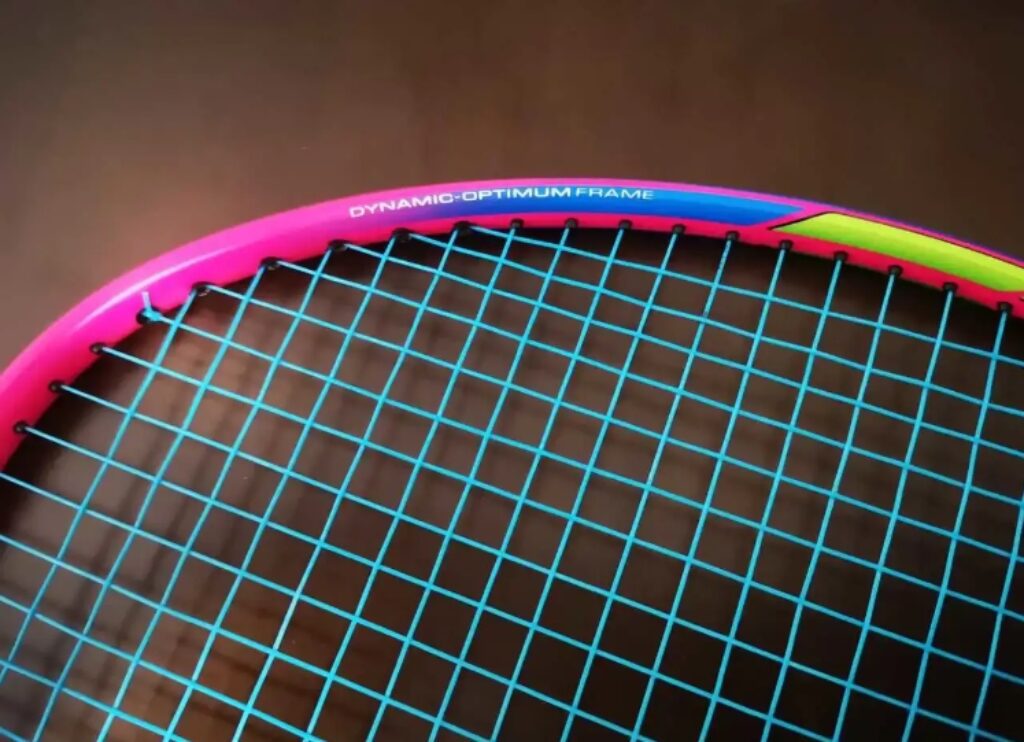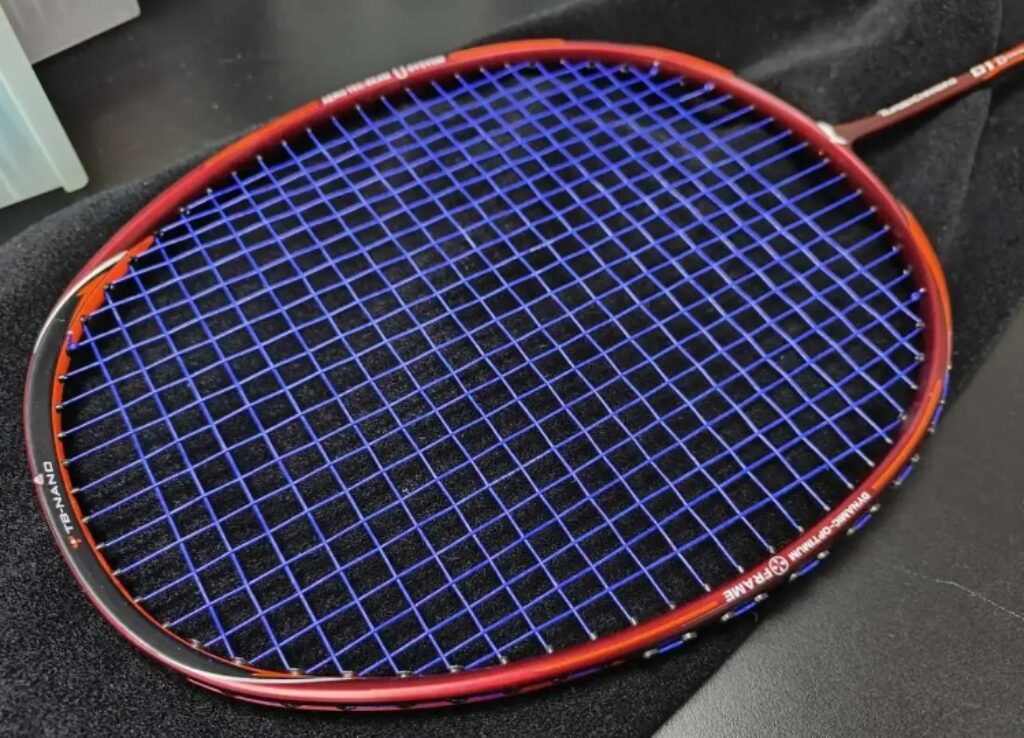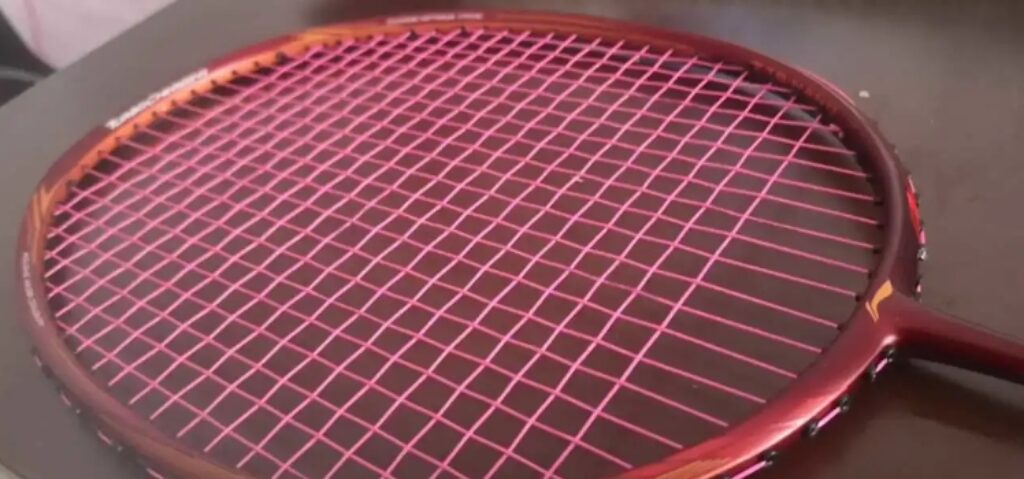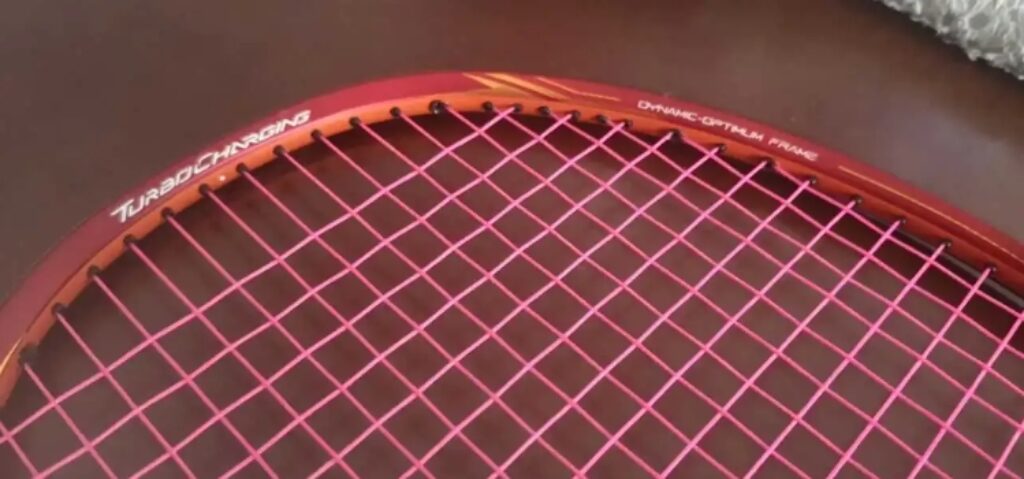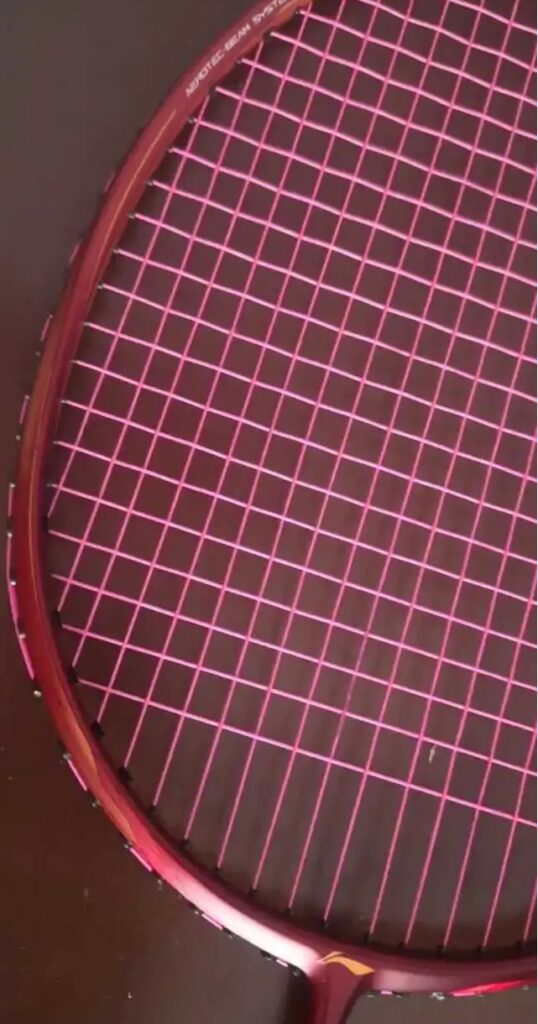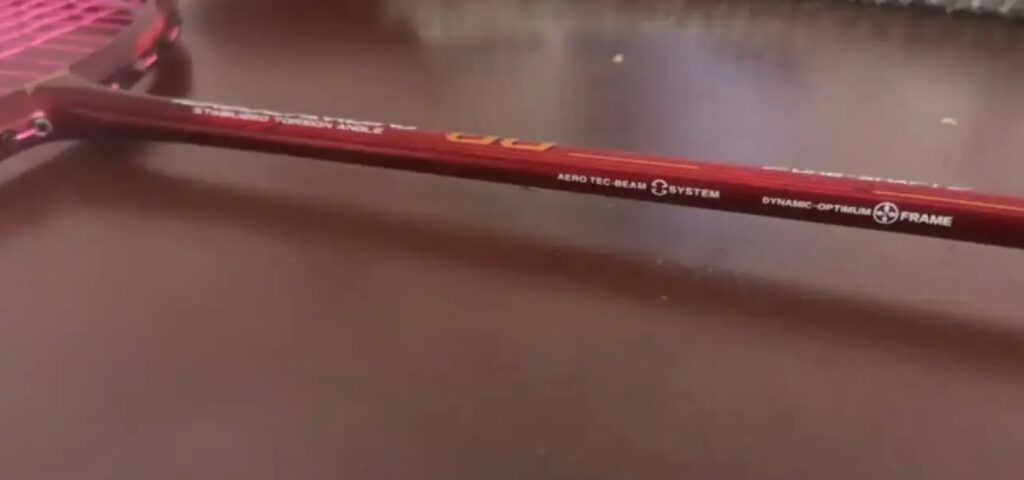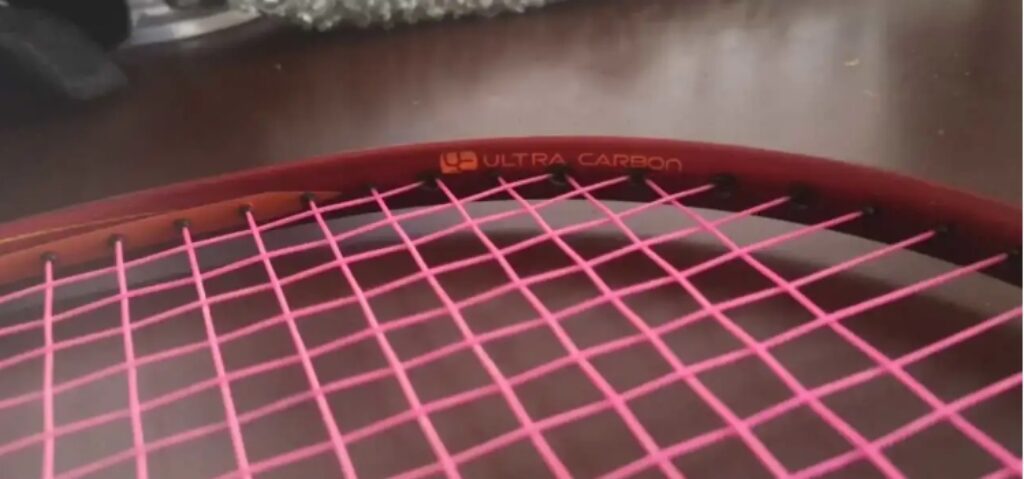Li-Ning, although a newcomer in the badminton world, has shown impressive performance, catching up fast. It boasts a full range of badminton products, sponsors teams like the Chinese national team and several others, and has a group of endorsing players.
YONEX, on the other hand, is an established giant in the field, consistently making solid moves and holding a significant position in the industry. These two major brands have recently been making headlines in the media, drawing plenty of attention.
As a badminton enthusiast, I have used multiple racket brands, with GOSEN and YY being the most frequent choices. I’ve been using YY’s AT700 and 900P for some time, and the power of the AT700 left a lasting impression on me. Recently, I got my hands on the Li-Ning N90II, and here’s a comparison with the YY AT700 for fellow players’ reference.
1. Appearance and Technical Specifications
1. Li-Ning N90II
- Model: AYPE016-1000, MP Force Series, Colors: Red, Gold.
- Dry Racket Weight: 87.9g; Balance Point: 305mm.
- Grip Size: S2; Weight: W3. Shaft Stiffness (Flexibility): Medium.
- String: YY95 (Gray), strung manually, machine-tensioned to 28 lbs (mains 27, crosses 29) with YY’s 4-point method. This was the first stringing for this racket.
- Grip: YY102 (Yellow), after removing the plastic wrap but keeping the original grip, the total weight is approximately 96.5g, with a balance point of 304mm.
- Dimensions: Grip length (including cone section): 200mm.
Shaft Diameter: At the cone: 7.16mm; at the mid-section: 7.2mm; 5cm above the T-joint: 7.18mm.
Frame Dimensions: - At the T-joint: Width: 11.56mm.
- At the 3 o’clock position: Width: 11.5mm, Thickness: 6.5mm.
- At the 12 o’clock position: Width: 11.14mm, Thickness: 6.68mm.
- Technology:
- Inner cone control.
- High composite density damping system.
- Multi-point composite carbon fiber reinforcement.
- Wing constant system.
- Frame mechanics optimization system.
- Aerodynamic frame section system.
- Superconducting nanotechnology.
- Ultra-fine high-strength biomimetic shaft.
- Elastic torsional recovery.
- Frame compression structure.
The official website lists Lin Dan as the player using this racket. Compared to the first generation N90, the second generation adds the inner cone control technology, while the other technologies remain the same.
2. YONEX AT700 (New Version)
- Model: YY AT series, Color: Bright Red.
- Dry Racket Weight: Approximately 89.1g; Balance Point: 306mm.
- Grip Size: G4; Weight: 3U. Shaft Stiffness (Flexibility): Stiffer.
- String: YY95 (Gray), strung manually, machine-tensioned to 28 lbs (mains 27, crosses 29). This was the second stringing, the first time was at 26 lbs.
- Grip: YY102 (White), after removing the plastic wrap but keeping the original grip, the total weight is approximately 97.6g, with a balance point of 306mm.
- Dimensions: Grip length (including cone section): over 200mm.
Shaft Diameter: At the cone: 7.13mm; at the mid-section: 7.26mm; 5cm above the T-joint: 7.16mm.
Frame Dimensions: - At the T-joint: Width: 11.38mm.
- At the 3 o’clock position: Width: 11.58mm, Thickness: 6.6mm.
- At the 12 o’clock position: Width: 11.38mm, Thickness: 6.32mm.
- Technology:
- Titanium Armor System.
- Square Head Shape.
- Built-in T-Joint.
- Nickel-Titanium Alloy.
- Low Air Resistance Cone Cap.
- Ultra-high Elastic Carbon Fiber.
- Film Titanium Armor.

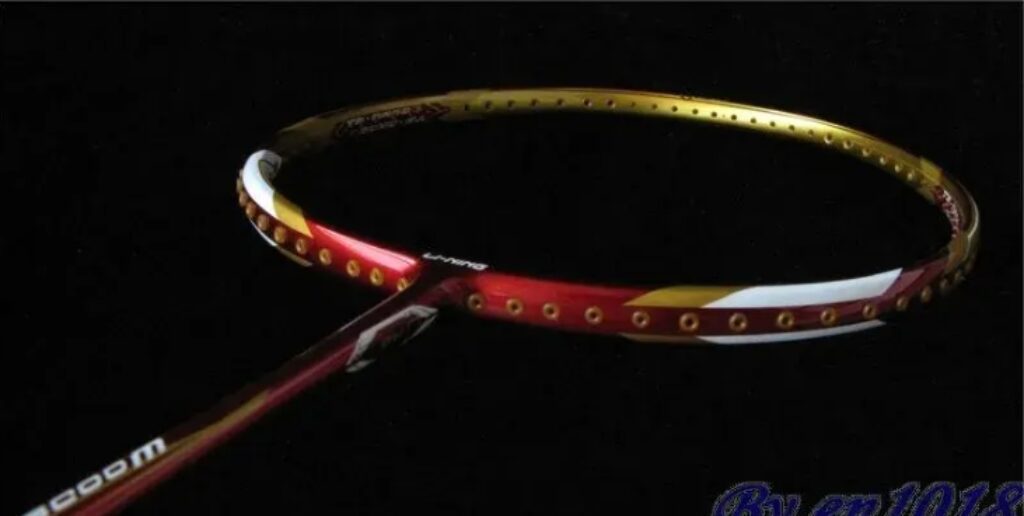
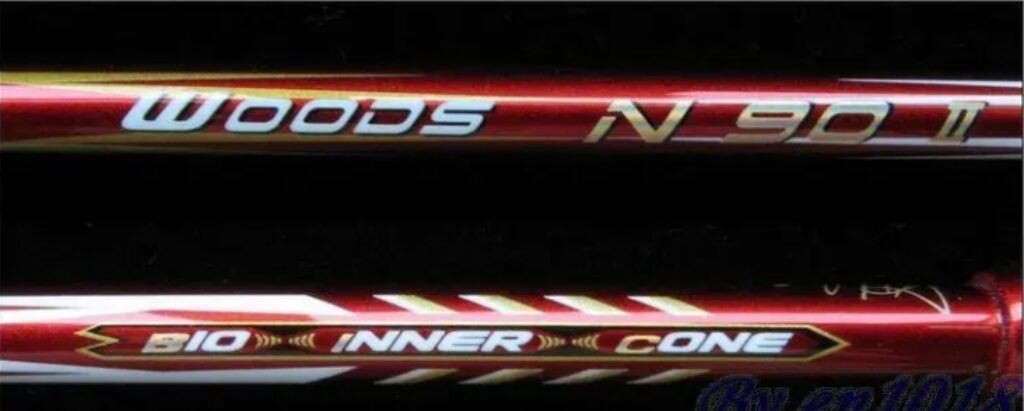
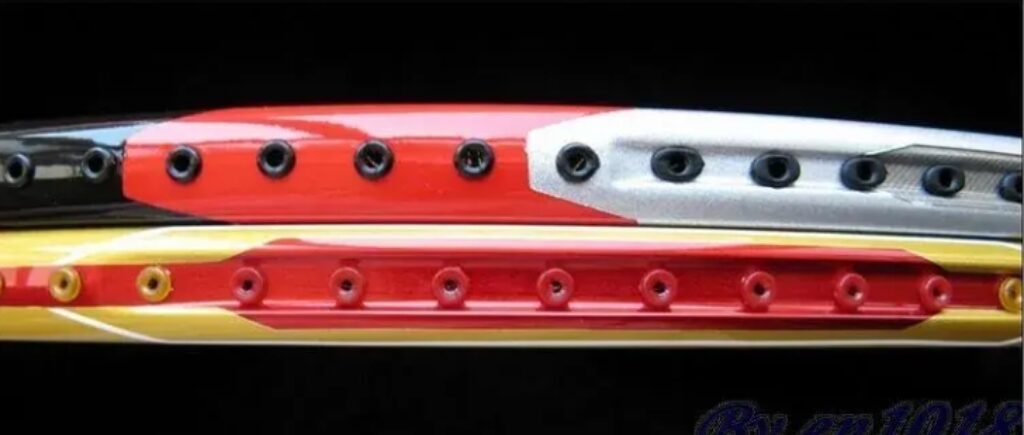
2. Experience
Clear Shots
Both rackets make it easy to hit clear shots, but the AT700 feels slightly more effortless. Despite the similar weight and balance point after applying the same string and grip, the AT700’s head-heaviness is more noticeable when hitting clears. When swinging both rackets, the AT700 feels heavier on the wrist compared to the N90II. According to records from EWEI Sports Forum, the swing weight (SW) of the JP version of the AT700 is around 90 kg/cm². Although I couldn’t find the SW value for the N90II, my personal feeling is that it’s lighter than the AT700.
Drive Shots
Both rackets can easily produce accurate drive shots, but there is a slight difference in feel due to the N90II’s shaft being softer than that of the AT700. The N90II seems more balanced, while the AT700 feels faster.
Flat Drives and Blocks
The N90II is quick to swing and can easily change the racket face to hit the desired direction, whereas the AT700 is slightly slower in this regard. However, the AT700 shows exceptional power in flat exchanges when hitting the shuttle.
Net Shots
Both rackets perform well in net kills and intercepting at the net, feeling very light and agile. When actively playing tight net shots or cross net shots, the N90II provides slightly better touch and control compared to the AT700.
Drop Shots
The N90II performs tight and controlled drop shots close to the net, offering a good sense of control, while the AT700 falls a bit short in this area.
Smashes
In terms of smashes, the AT700 clearly outperforms the N90II. The power transmission is seamless, delivering a solid feel with minimal energy loss. Smashes are sharp, which could be due to the stiffer shaft and titanium armor technology of the AT700. On the other hand, while the N90II’s head and shaft offer good consistency, there’s a slight delay in power delivery when smashing. This lag is something I’ve also noticed when using GOSEN’s Platinum Limited Edition and the AT900P during smashes.
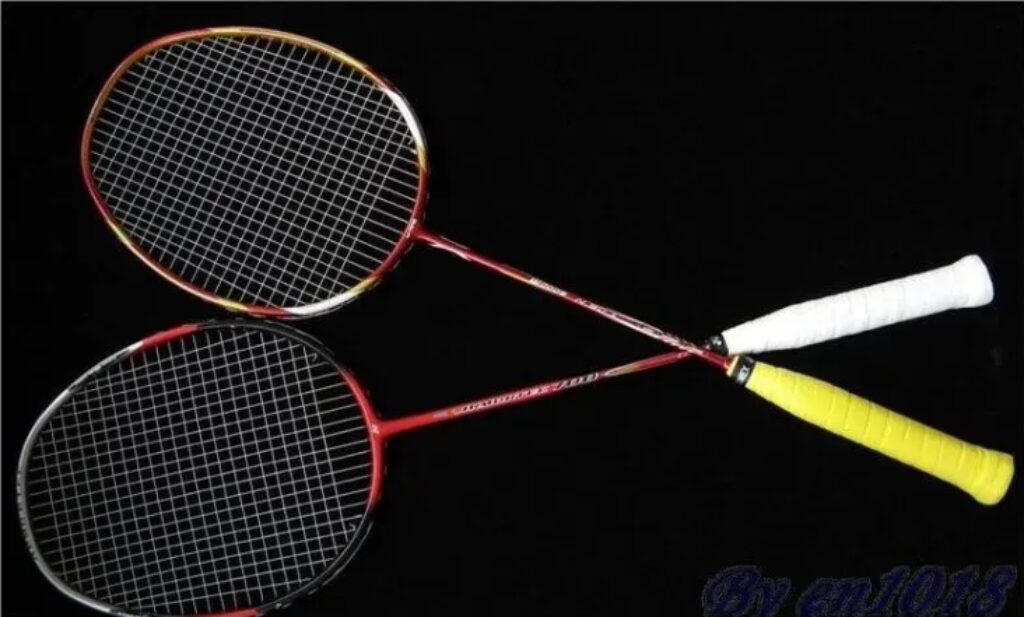
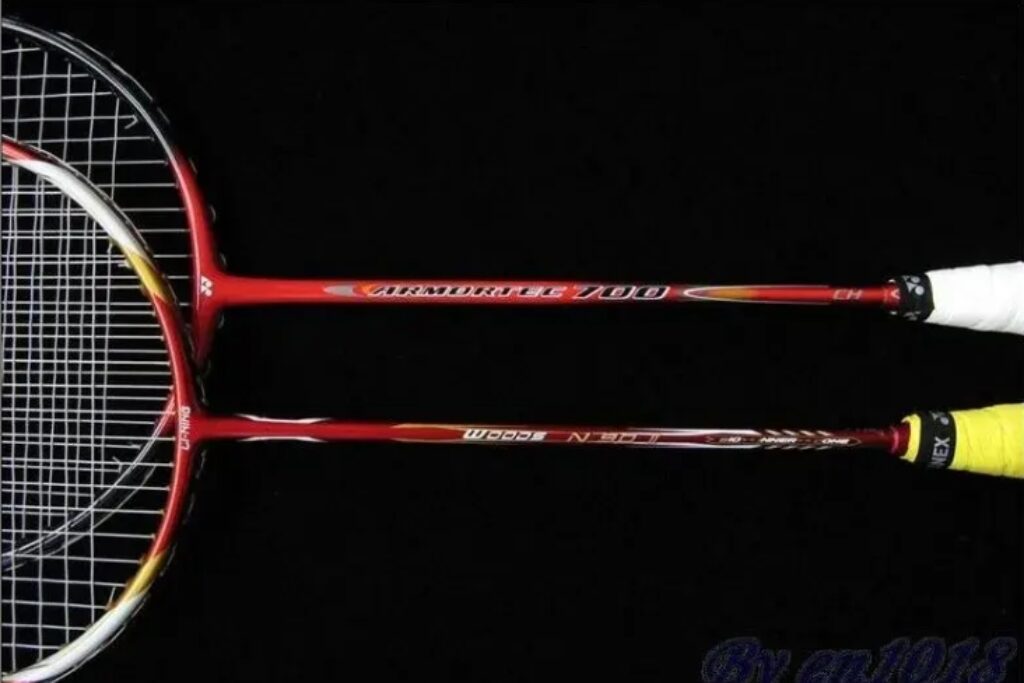
3. Summary
The N90II’s craftsmanship is highly detailed, with excellent paint quality. The combination of red, gold, and white offers a balanced color scheme, exuding a certain elegance. There are no visible flaws in the appearance, and it comes with a bag that can hold three rackets, which is practical for casual play. It even includes a small bag of spare grommets, showcasing thoughtful packaging. After some use, I haven’t noticed any paint chipping or cracks, though further inspection is needed for any minor bumps. For such a short time, Li-Ning’s racket design and build quality have reached an impressive level, worthy of praise.
The AT700 also has a unique appearance with its red, black, and gray color scheme, which is quite attractive and well-coordinated. Among YY rackets, this one stands out for its beautiful paintwork. However, after some minor clashes during doubles play, the paint seems slightly more fragile, with a few small areas showing signs of chipping. The AT700 has gone through four different batches (including a limited edition, as detailed in related forums), and this new version appears to be the final one, as it no longer appears in YY’s catalog for this year.
I strung the N90II at 28 lbs for the first time, slightly below the recommended tension. This was similar to my experience with GOSEN rackets, where I don’t exceed the recommended tension, but it reaches the desired tension on the first stringing. With YY rackets, I also tend to stay below 25 lbs to avoid voiding the warranty. The frequent reports of frame sinking make me a bit concerned. After stringing both rackets at 28 lbs, there was minimal frame deformation in either racket, with both showing similar deformation levels: approximately 3mm horizontally and 2mm vertically.
In conclusion, there’s a significant difference between these two rackets. The N90II is easier to handle, while the AT700 requires more explosive power.
Each racket, whether used for the first time or by different players, provides a unique experience. Every racket has its own personality, and perhaps that’s the charm of top-tier rackets. It’s also part of the beauty of badminton, as the ever-changing sensations of playing can become quite mesmerizing and addictive.




